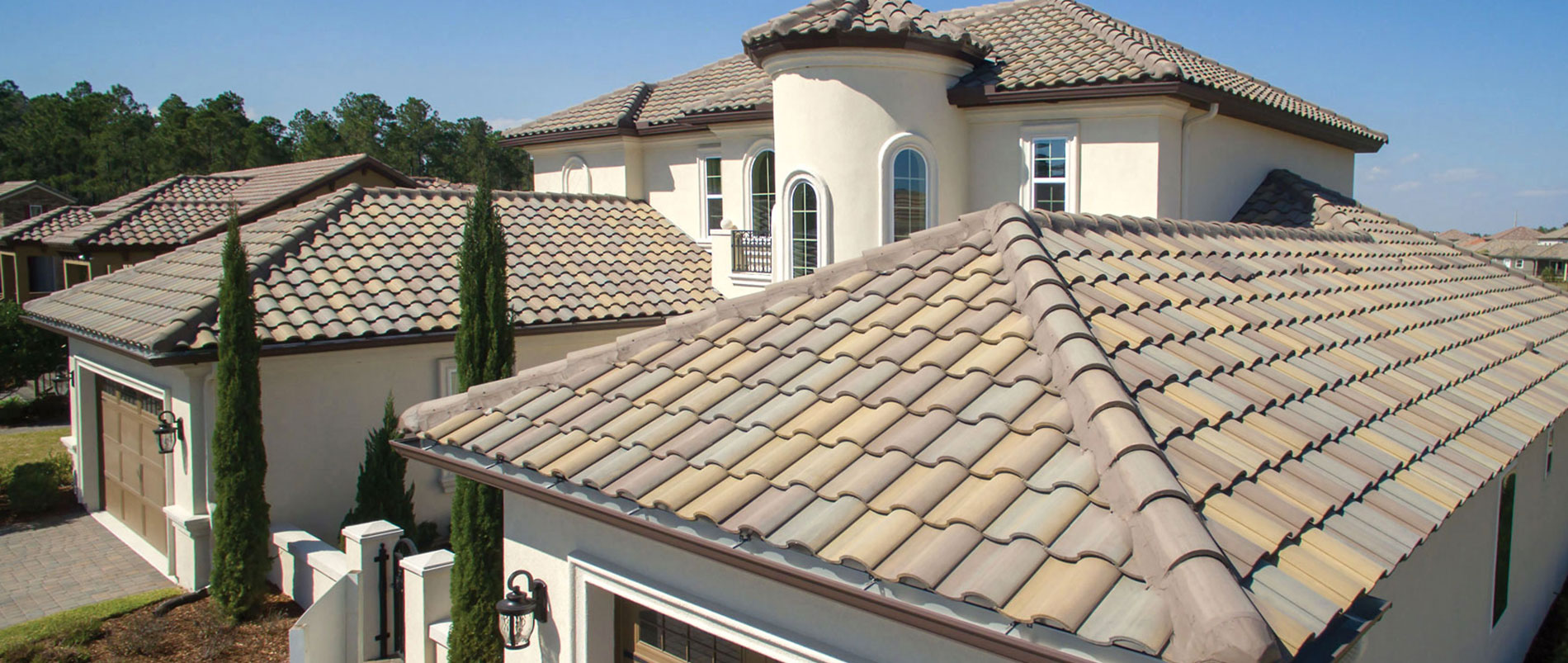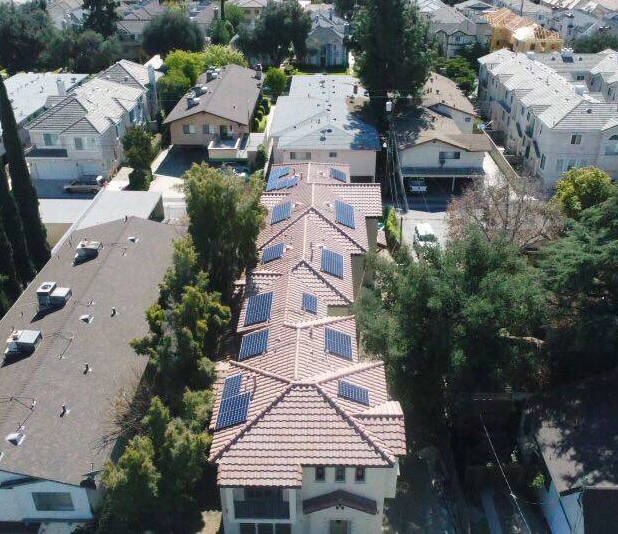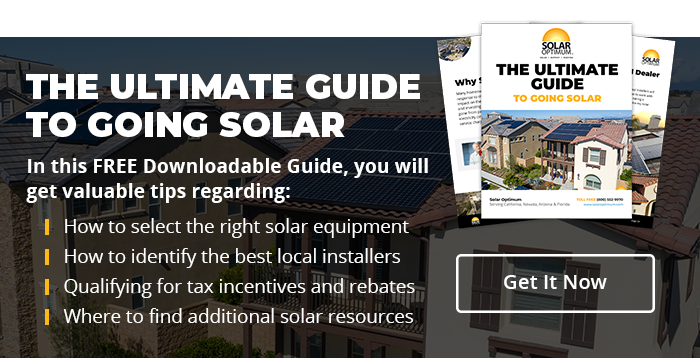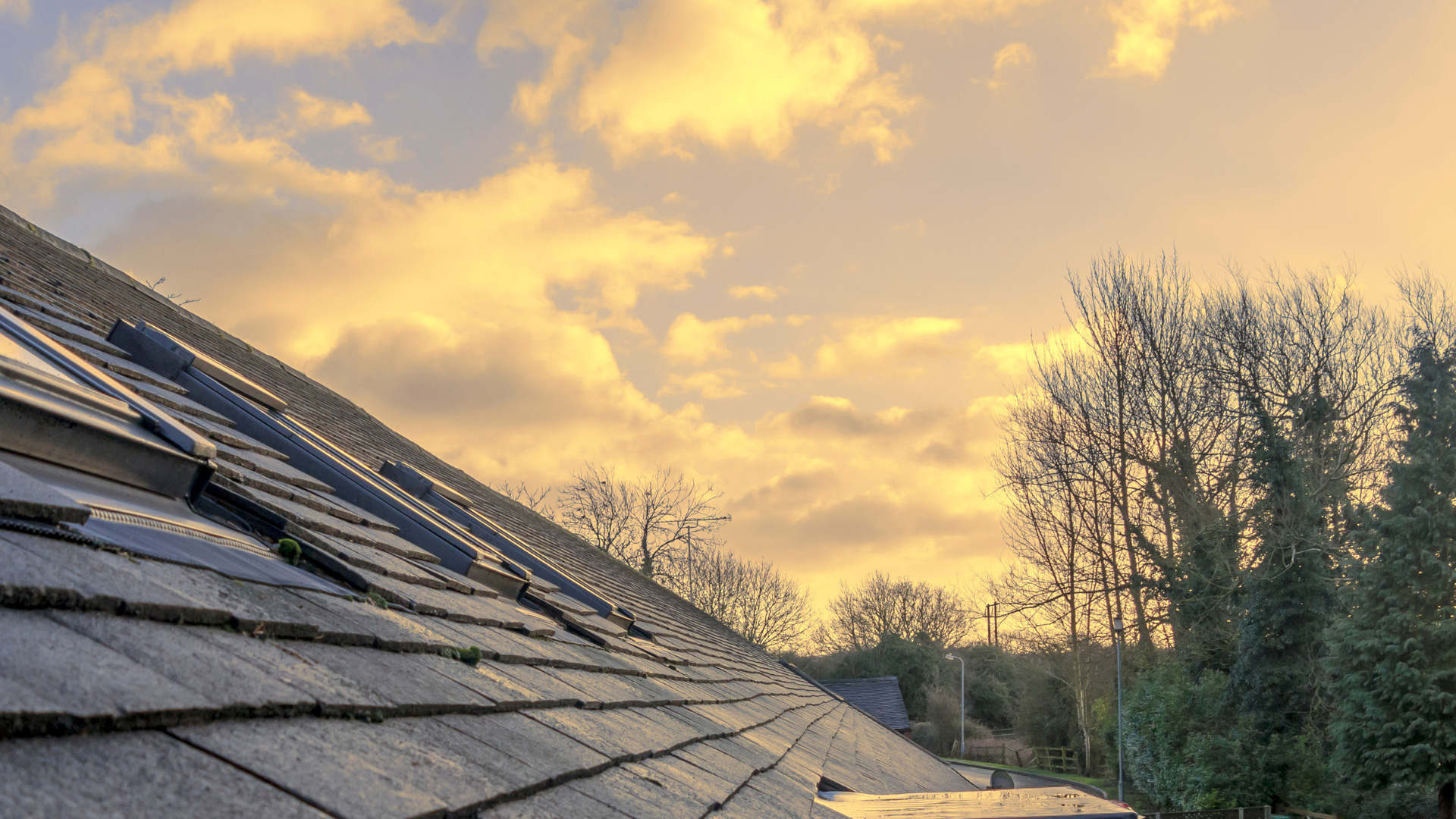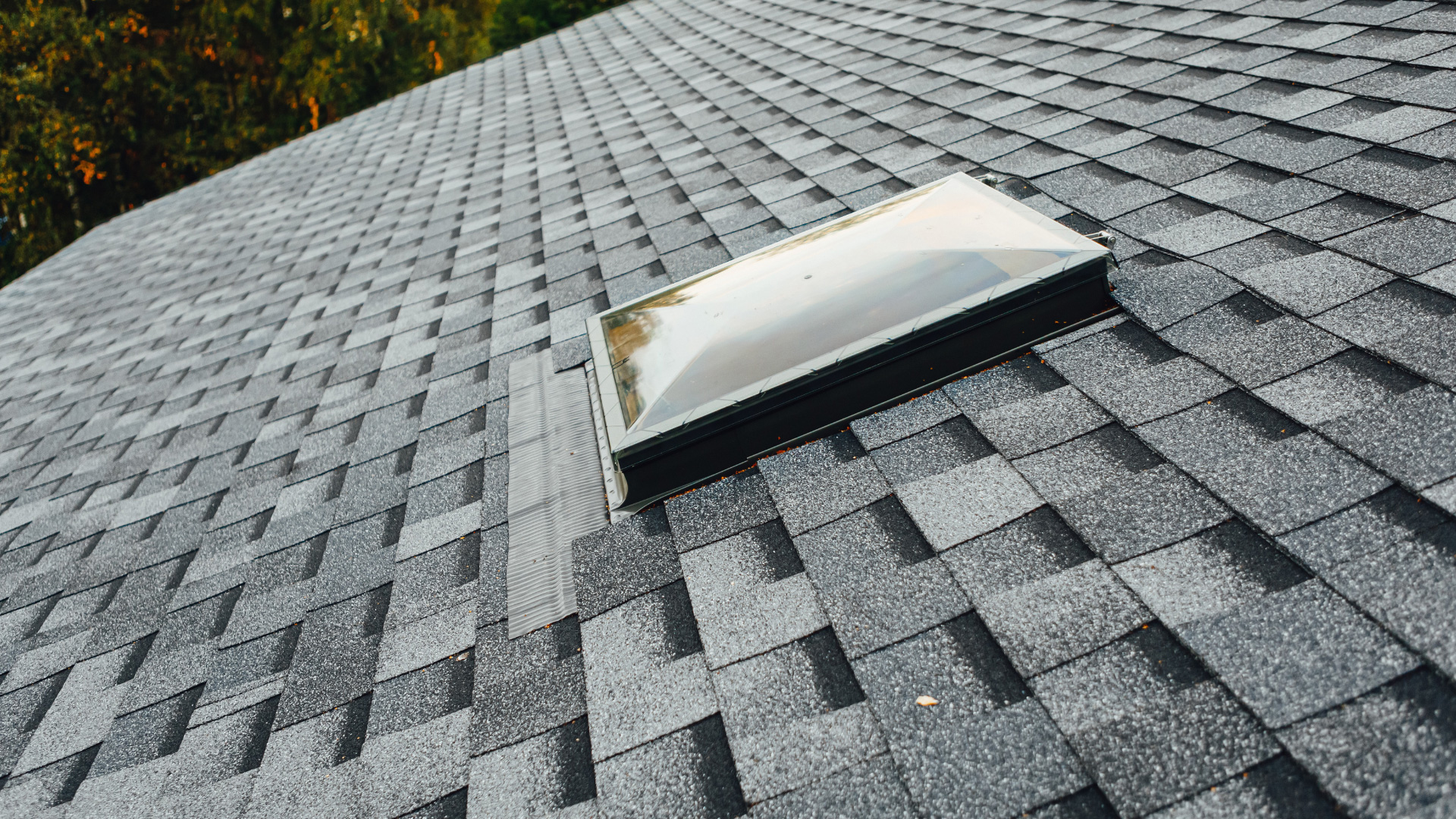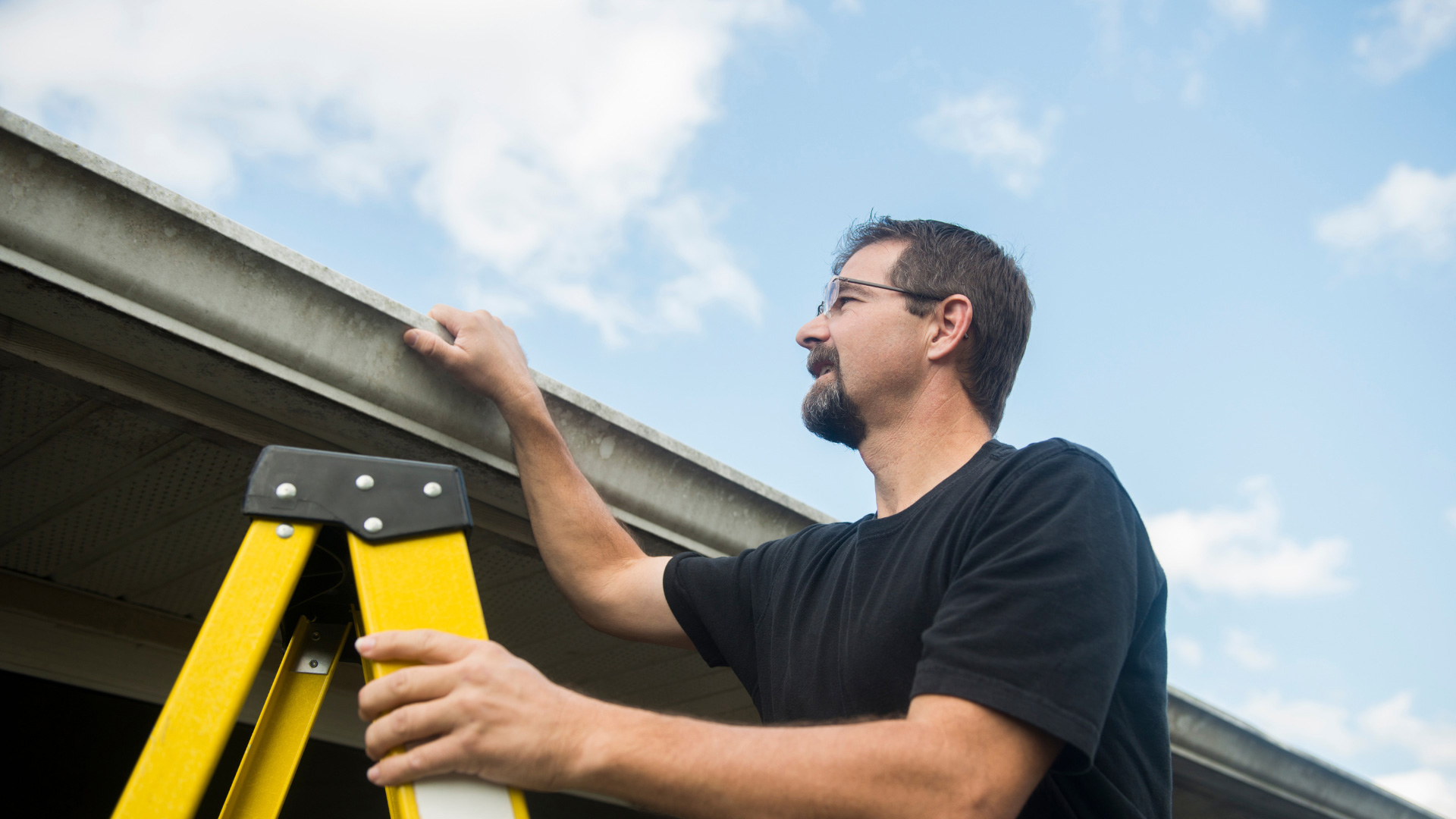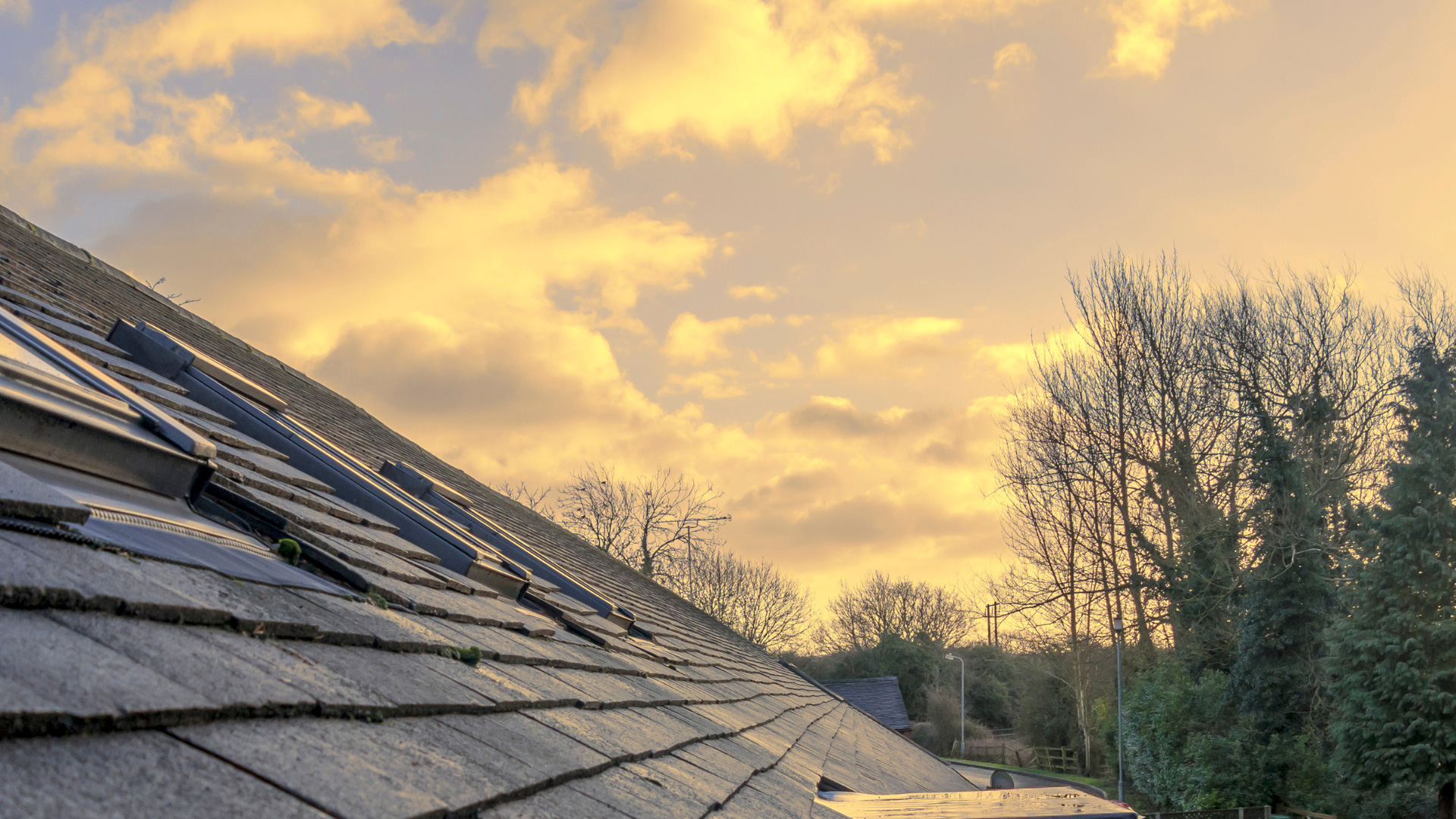Before going solar, it is essential to ensure that your roof is fit to support a solar PV system. Most solar panels have a lifespan of 25-30 years or more, so installing them on a roof that can last withstand that duration is also vital.
A professional roofing evaluation can help you determine whether your roof is ready for solar or does not hold up well and needs to be replaced. If you do need a roof replacement before going solar, you will of course want to know “what is the best roof material for solar panels?” Read on to learn what roofing materials are the most compatible with solar PV equipment.
Best Roof Materials for Solar Panels
Besides good condition, the best roof materials for solar panels are easy to install, durable, and affordable. The following are the standard roof materials that are best suited for solar panel installation.
Shingle Roofs
The two main shingle roofs are composite and asphalt shingles. Composite shingles are slate, laminate, and wood, while asphalt shingles consist of cellulose mat or fiberglass materials mixed with asphalt.
Mounting solar panels on shingle roofs is simple as it only requires standard penetrating mounts that can easily be attached. The installation is affordable and can last for around two decades, making it a good option when attaching solar panels with a long life span.
Metal Roofs
Metal roofs with standing seams work well for solar panel installations. The standing seams allow for easy attachment of solar panels, and therefore, you do not have to make drills for attachment. Metal roofs are ideal for warmer or sunnier regions as they reflect any light that does not fall on the solar panels, thus cooling the house.
Most people also prefer to go with metal roofs due to their durability. A metal roof can last for about 40 to 70 years. On the downside, metal roof installation is more expensive when compared to most other roofing materials.
Tile Roofs
Tile shingles are usually made of clay, concrete, and slate. If your house has a tile roof, you can install a solar panel using a penetrating mount that raises them above the roof. This can result in extra labor or installation costs as you might be required to remove or cut some of the tiles to make holes for the mounts.
The main advantages of using tile roofs are that they are durable, more waterproof than most other roofs, and aesthetically pleasing. The main disadvantage of tile roofs is that they are more expensive than other roof types, though less costly than metal roofs.
TPO Roofing
Thermoplastic Polyolefin (TPO) roofing is composed of recycled rubber held together by seams that are glued together using heat. TPO is a versatile low-slope roofing system that is cost-effective and durable due to its resistance to heat and UV Rays.
Solar panels installed on a TPO roof are mainly “floating” as anchoring the solar panel on a TPO membrane would comprise it and allow water leakages. With the “floating” floating method, the solar panels lie on plastic frames placed on top of the TPO roof.
Contact Solar Optimum for Professional Solar Panel Installation
If you are looking forward to changing your roofing material when installing a solar panel or have any inquiries about installing solar panels on your current roof, Solar Optimum got you covered. Contact us today to learn more about roof installation and replacement.

